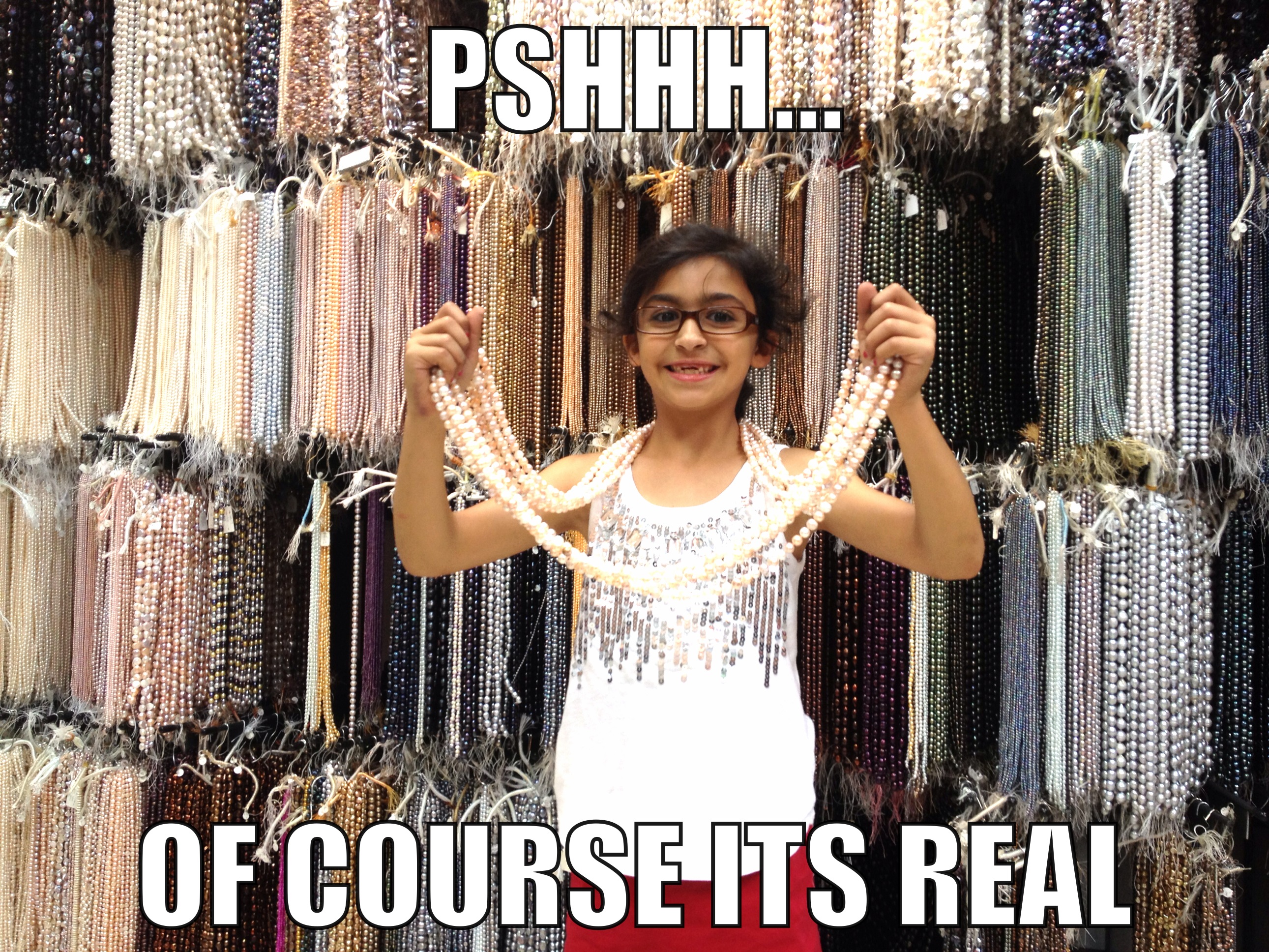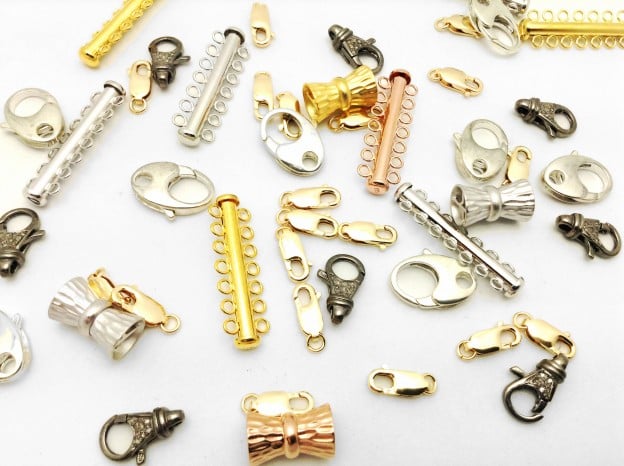Clasps are almost always the most interactive part of the jewelry you wear so it is important that you choose one that best fits the style without making it too difficult to take on and off. As with all aspects of designing, you need to take a step back and consider a few things before you find the ideal clasp for your piece. How do you want your piece to open and close? Are you looking for something big and flashy or a simple lock that just does the job? Each design that you make will have its own unique feel to it and we will explore some general guidelines on how to narrow down the choices.
Mixing metal types will make it a harder sell
If you are planning on selling or displaying your jewelry, it is generally not a good idea to use a clasp made with a different material than the rest of the piece. This is especially true if you are mixing karat gold and diamond findings with gold plated, gold filled and cubic zirconia components. One of the most common questions we get from potential buyers about our finished pieces is, “is it real?”. Though it is an overly simple question that never has a yes or no answer, it is ideal to have a quick and easy to understand explanation. If a casual admirer asks about your new handmade silver chain necklace with CZ beads, it will sound much better when you answer directly, “Yes, it is Sterling Silver Chain and Beads with Cubic Zirconia”. If you had to explain, “Well, the chain is 14K White Gold, but the clasp and the beads are Sterling Silver with Rhodium Plating”, not only will it will sound like you are avoiding a relatively simple question, your casual observer will likely be exhausted listening to all the details before you are halfway through your description! Mixing metal types makes it harder to explain your design which may confuse potential buyers and make it a much harder sell.

Safety First, Make sure the clasps do their job
For stringing jobs like beaded bracelets, or necklaces it is essential that you use clasps with closed jump rings. We touched on this concept in our previous blog, Which Jump Rings Can I Keep Open?. If you string onto a clasp with an open jump ring, you run a high risk of the string slipping out and having your piece come undone. String and thread isn’t meant to last forever, but there is nothing worse than having a stringing job fall apart from neglecting small, but important details like these. On a related note…
Make the piece easy to put on and take off, but not too easy!
Another common complaint about jewelry is that some customers love one of their bracelets or necklaces but don’t wear them because they need someone to put it on for them. The obvious solution to this problem is to replace the old clasp with an easier to use ending that will not compromise the design but there are a few caveats to this approach. In most cases the easier a clasp is to put on, the easier it is to fall off on its own. A good example is magnetic clasps which do not need levers, buttons, or hooks to open and close. They are probably the easiest clasp to use, but we do not recommend them for expensive pieces because it can open if the bracelet gets caught on a hook or if someone pulls on it and you may not even notice it is gone until it is too late! It is usually better to try out a few clasps for each of your designs that a person can operate on their own and use your judgement to find a good middle ground between safety and ease of use.
To sum things up…
We have gone over a few general tips for selecting the ideal clasp for your designs. Keep the materials you use consistent with the rest of the design, make sure your clasp is attached securely and is easy to operate. In our next entries we will go over specific classes of jewelry clasps and endings and discuss the pros and cons of each.
-Cyrus Nemani, Gempacked

